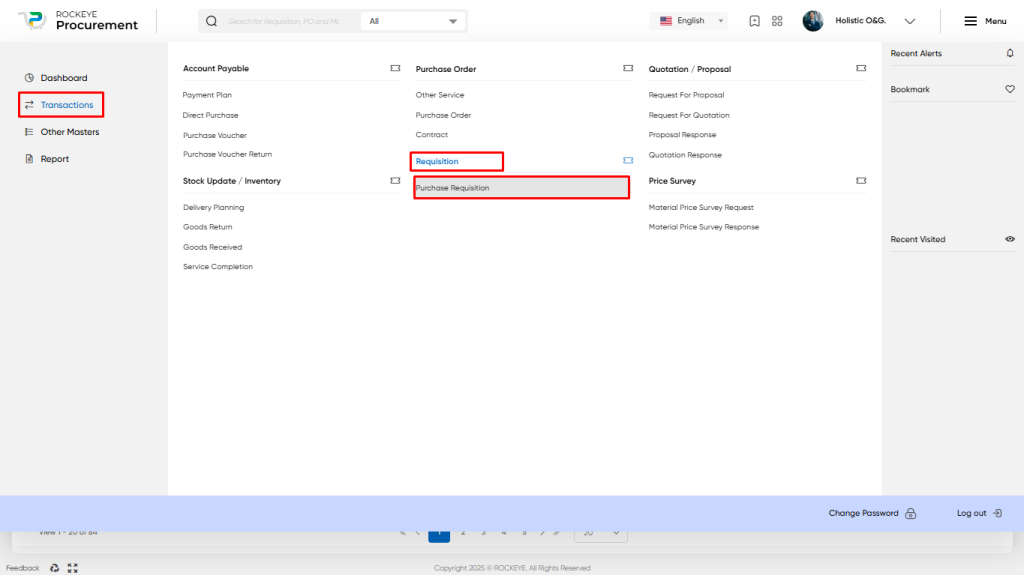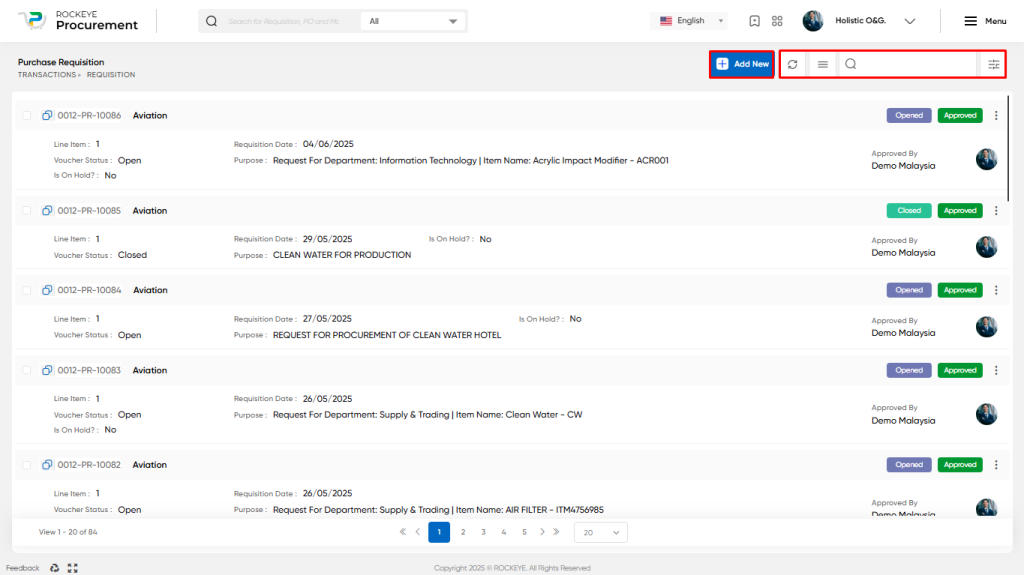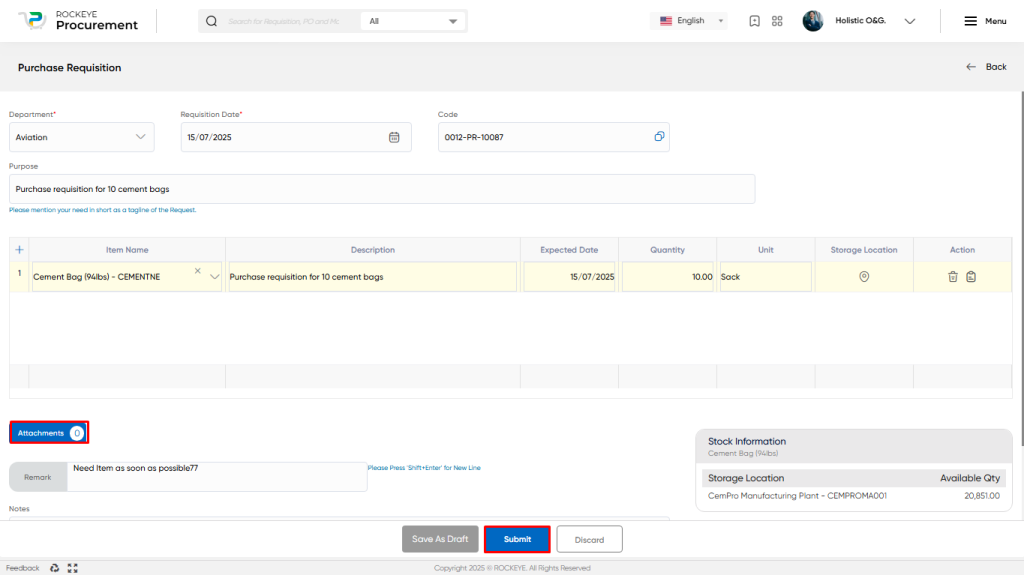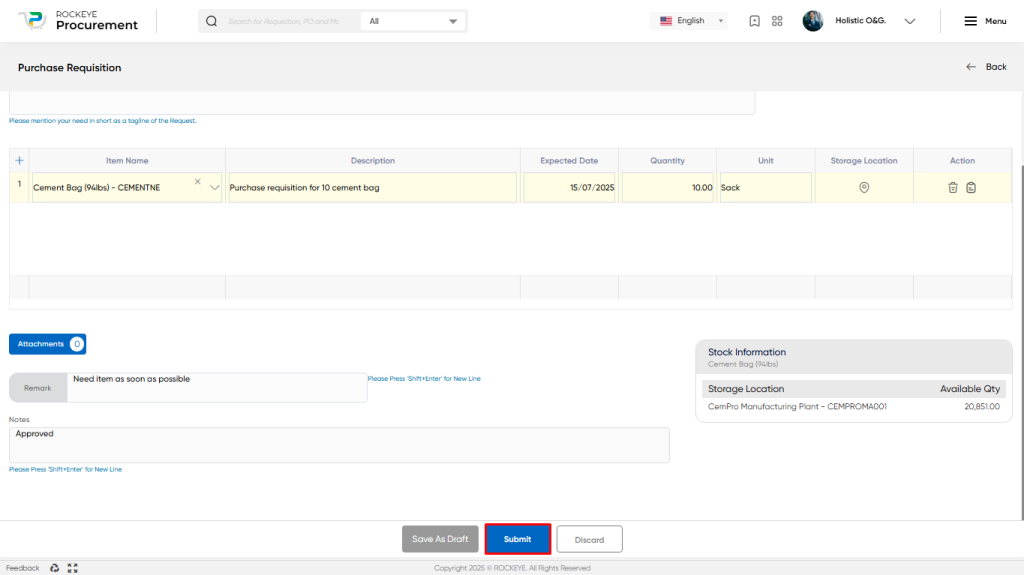Purchase Requisition/Purchase Request
Introduction/Purpose:
A purchase requisition entry in a procurement system is a formal request for the procurement of goods or services by an organization. It is usually initiated by a department or individual within the organization that requires specific goods or services for their work. The purchase requisition includes the details of the required item, such as its description, quantity, and expected delivery date.
The importance of purchase requisition entry in a procurement system is that it serves as a critical step in the procurement process. It helps to ensure that the procurement of goods and services is carried out in a systematic and organized manner. The purchase requisition serves as a documented request that ensures that the procurement process follows the organization’s procurement policies and procedures.
Dependency:
To record a purchase requisition in a procurement system, there are several dependent master or key elements that are required in the form. These elements include:
- Requesting Department: This is the department within the organization that requires the product or service. It is important to identify the department to ensure that the requisition is properly routed for approval and processed.
- Requested Product/Service Detail: This includes a detailed description of the product or service being requested. It should include information such as the product or service name, specifications, and any other relevant details.
In summary, these dependent master or key elements are necessary for the form to ensure that the purchase requisition is accurately recorded in the procurement system and can be properly tracked and referenced for future purposes.
Process Flow:

How To Navigate:
The navigation to record a purchase requisition in a procurement system typically involves the following steps:
- Click on the main navigation icon: The main navigation icon may be located in the top right corner of the screen. Clicking on this icon will open the navigation menu, which typically includes links to various sections of the procurement system.
- Click on the transaction section: The transaction section is located under the left section of the screen; clicking on this section will display a list of transactions related to procuring.
- Find the Requisition section: The Requisition section is located in the list of transactions under the transaction section. Clicking on this section will display a list of transactions related to requisition.
- Click on the purchase requisition link: The purchase requisition link is located under the requisition section. After clicking on this link, you can navigate the purchase requisition listing, and from that, you can easily upload new transactions into the system.

Listing:
The purchase requisition listing is an essential feature of a procurement system that allows users to view and manage all recorded purchase requisitions. The key features of the purchase requisition listing include:

- Record Filter: The purchase requisition listing may include a filter option that allows users to filter the list of requisitions based on specific criteria, such as date range, voucher status, department name, order request type, or approval status.
- Transaction Search: The purchase requisition listing may include a search function that allows users to search for specific requisitions by transaction number or other keywords.
- Export transaction: The purchase requisition listing may include an export transaction option that allows users to export the list of requisitions to a spreadsheet or other file format for further analysis or reporting.
- Extended features for each transaction: The purchase requisition listing includes extended features for each transaction, such as print, view, activity log, tracking history (PR Activity Log tracks line-item movement from creation to PO generation), On Hold/Release (users can hold a purchase request and schedule a release date if it hasn’t progressed.) and more.
- Listing view: The purchase requisition listing may display each requisition in a card format view that includes key information such as transaction number, transaction date, number of items, approval authority name, voucher status, and approval status of the transaction.
- Voucher Status: The purchase requisition listing displays the Voucher status of each requisition, indicating whether it has been open or closed.
- Approval status: The purchase requisition listing displays the approval status of each requisition, indicating whether it has been approved or not.
In summary, the purchase requisition listing is a crucial feature of a procurement system that provides users with an overview of all recorded purchase requisitions and allows them to filter, search, export, and manage the requisitions efficiently. It also includes extended features for each transaction and displays key information such as voucher status and approval status in a card format view.
Recording & Update:
A purchase requisition is a document that is used to initiate the purchase of goods or services in a company. It is typically created by a department or an employee who identifies a need for a particular item or service that is not currently available. Once the purchase requisition is approved, it triggers the purchasing process and ultimately leads to the creation of a purchase order.

The purchase requisition entry into a procurement system is typically divided into three parts:
Basic Information:
The first part of the purchase requisition entry displays information related to the transaction, this will include the below fields:
- Department: The department generating the Requisition is the department that takes requests for the goods or services to be purchased.
- Requisition Date: The Requisition Date is the date on which the document is created. This is the date when the department initiates the process of requesting the purchase of goods or services.
- Requisition Document Number: The Requisition Document Number is a unique identifier given to the Purchase Requisition. This number is used to track the Requisition throughout the procurement process
Material/Service Information:
The second part of the purchase requisition entry displays information related to the items purchased, this will include the below fields

- Item Name: This is the name of the material or service being required.
- Description: This field will describe the item being requested.
- Expected Date: The expected date in a purchase requisition refers to the date by which the department expects to receive the requested goods or services.
- Quantity: This is the quantity of the material or service that is requested by the user.
- Unit: A Unit refers to the specific unit of measurement that is used to quantify the goods or services being requested
- Storage Location: This includes additional information about the material or service being requisitioned, such as specifications or delivery location.
- Action buttons: These buttons provide the functionality to remove or add a line item.
Overall, the middle section of a purchase requisition provides detailed information about the goods or services being requested and other relevant details.
Summary Information:
The third part of the purchase requisition entry provides a summary of the transaction, showing the below information, and some additional information that is related to a transaction.

- Remark: This field is used to put internal remarks or notes related to the purchase requisition.
- Notes: This field allows the user to add any specific notes related to the purchase requisition.
- Attachment: This field allows the user to upload any requisition copy or other documents related to the purchase.
The user can perform the following actions in this section:
- Save as Draft: This option allows the user to save the transaction information in draft mode and publish it later. This is helpful if the user wants to review the information before submitting it for approval.
- Submit: This option allows the user to publish the transaction information. If the system has an approval flow, the maker will submit the information, and it will be sent to the approval authority or checker for approval.
- Discard: This option allows the user to discard the transaction before saving it.
In summary, recording and updating purchase requisition transactions involves creating the requisition, obtaining necessary approvals, and making any required changes before converting the requisition into a purchase order.